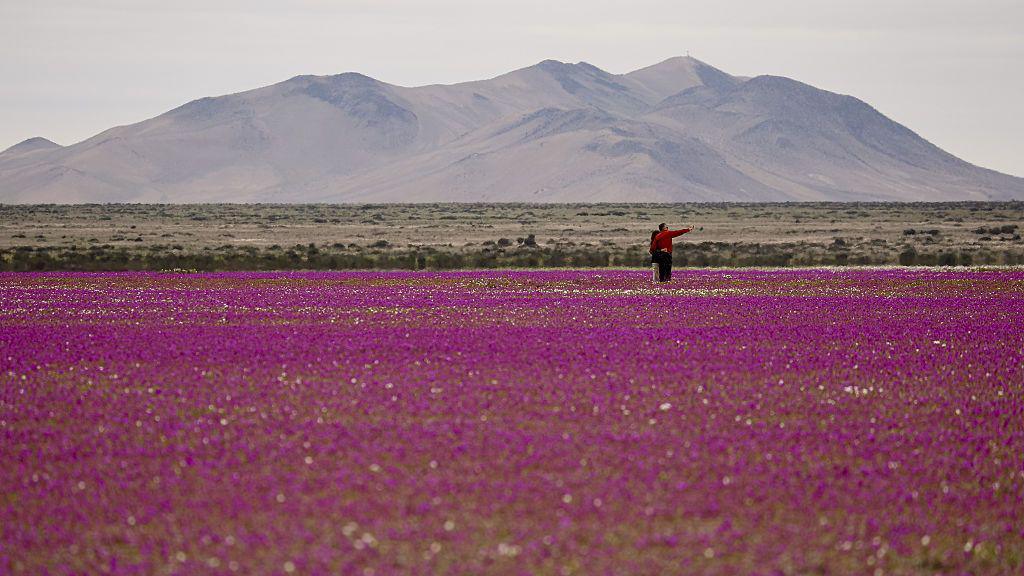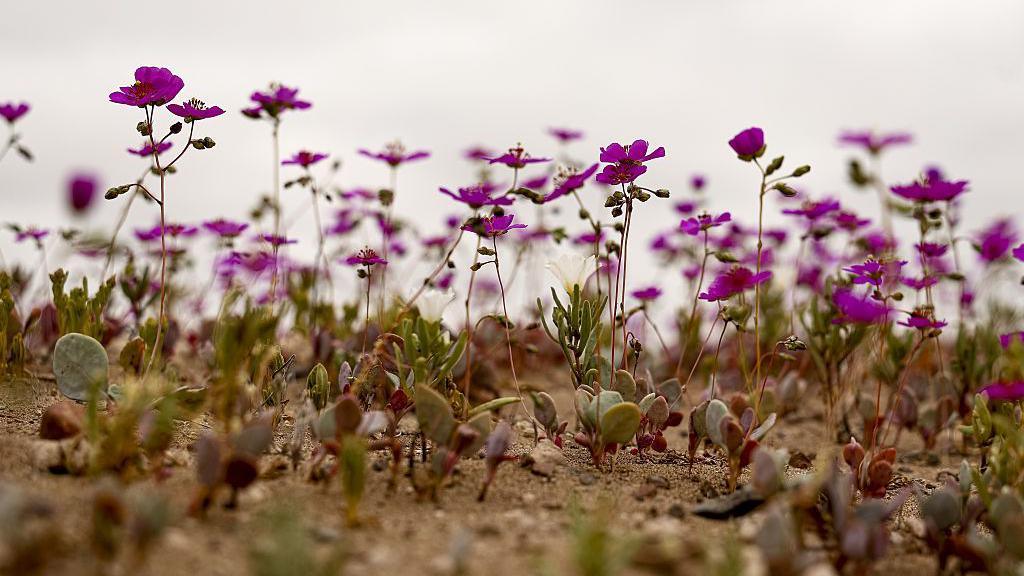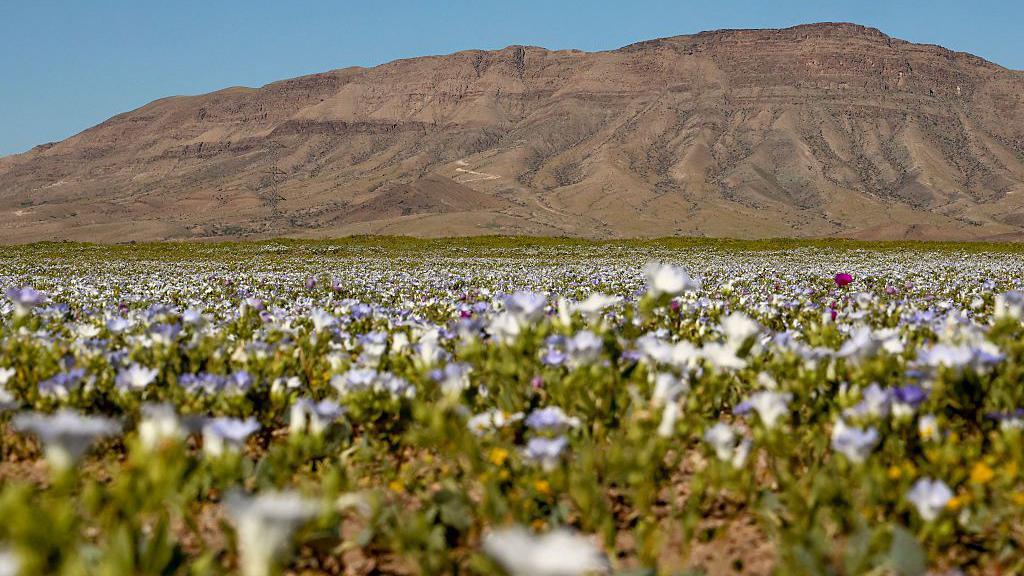Rare wildflowers bloom in Chilean desert

- Published
These wildflowers aren't what most people would expect to see in the desert in Chile - but they've been able to bloom thanks to wetter weather than usual.
Chile's Atacama Desert is one of the world's driest places, with around 2mm of rainfall a year on average.
But this year has been one of the wettest in recent years, seeing almost 30 times that with some areas experiencing up to 60mm in July and August.
And that has seen the flowers pop up.
Botany expert Víctor Ardiles said, "Nowhere on Earth does this phenomenon occur like it does here in Chile."
- Published23 May
- Published22 January
- Published28 February 2023

Lots of tourists have been travelling here to get a view of the spectacular flower show.
Some even trek from Chile's capital Santiago, 800km (497 miles) south of this region.
Most of the flowers will have vanished by November when summer starts, although some that can survive the hot temperatures might last around until January.

Víctor Ardiles is chief curator of botany at Chile's National Museum of Natural History.
He explained how seeds from more than 200 flower species sit in the red and rocky soil desert all year, waiting for the rains.
Seeds must store up at least 15mm (0.6 in) of water to be able to grow.
This year they were helped by the unusual downpours, which soaked the desert foothills and highlands.
But enough water isn't the only thing the flowers need, but also the right temperature, daylight and humidity.
Víctor added: "The Atacama Desert... is the driest desert in the world and when you see a sporadic rainfall event like this, it really makes it a unique event in the world."
